Eugene Headon operates a silage contracting and tillage enterprise alongside his son Garrett on the outskirts of Naas, Co Kildare. Spraying up to 9,000ac each year leaves Eugene and Garrett busy on the sprayer from the time crops are planted until harvest time.
The SAM Vision 4000 sprayer was bought to replace an older Househam self-propelled sprayer.
Eugene made the move to self-propelled sprayers a number of years ago for several reasons. One of the reasons was that there was less headland damage when turning as all four wheels steer, leaving the sprayer more manoeuvrable than a trailed sprayer.
It is clear the sprayer has been built with the end user in mind
Eugene also noted the better ground travelling capabilities of the self-propelled sprayers, having owned both variants, trailed and self-propelled.
“Self-propelled sprayers eliminate the need to drag an extra axle around the field which would have to be done with a trailed sprayer,” he said.
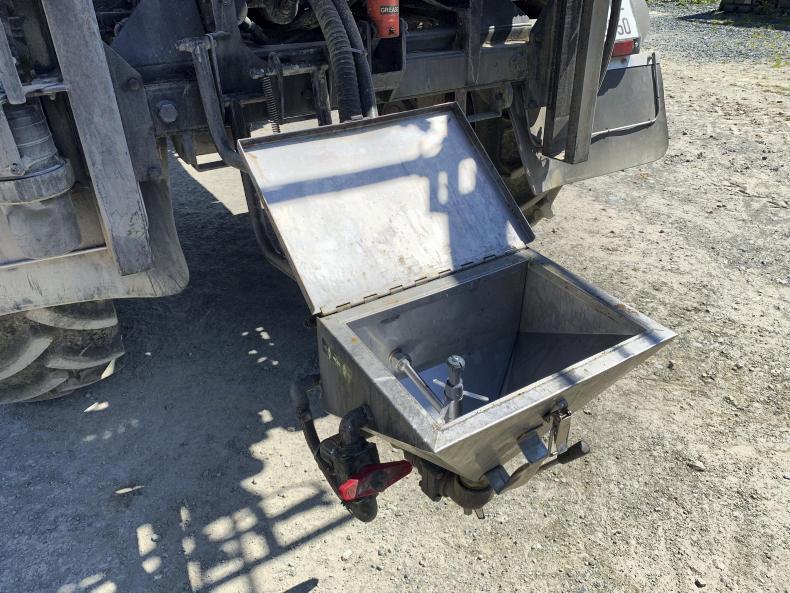
The 25l stainless steel induction hopper.
This extra axle may seem like a good idea but it is the pulling force exerted on the tractor’s back axle that causes it to sink into soil when gripping. The hydrostatic drive of a self-propelled machine, on the other hand, keeps on travelling, on leaving less damage to the surface.
Sands Agricultural Machinery
Sands Agricultural Machinery Ltd (SAM) has been involved in the application of agrochemicals since the 1960s and has been designing and building self-propelled crop sprayers since 1975. The British-built machines are relatively new to the Irish market, although since being appointed main Irish agents, Furlong Equipment Services Ltd has sold a number of both new and secondhand machines throughout the country.
Eugene and Garrett made the decision to buy a SAM sprayer after seeing the strong build quality of the machines.
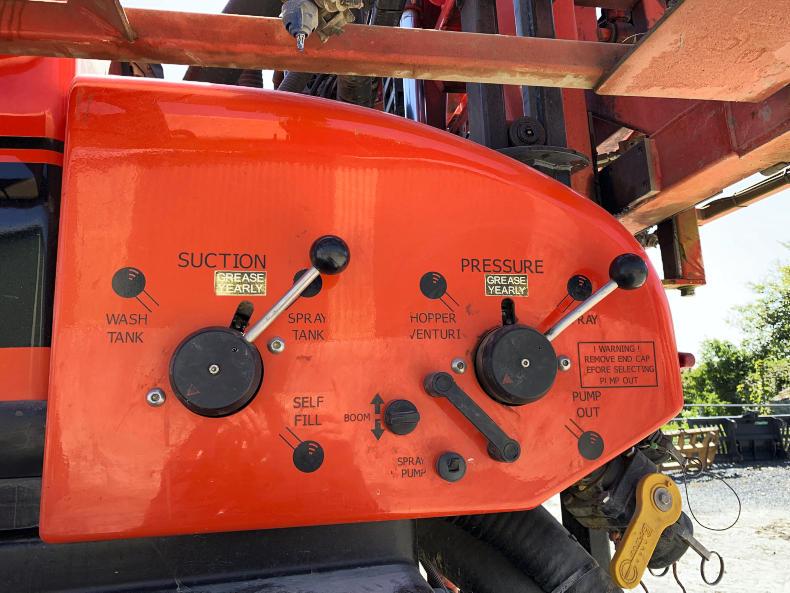
The sprayer's manual controls are simple and straightforward from an operator's point of view.
“It is clear the sprayer has been built with the end user in mind,” noted Eugene when discussing the sprayer’s construction and neat layout out of cables and pipes throughout its body and boom sections.
The Headons were on the market for a straightforward, reliable sprayer with a backup service that could be relied upon.
They bought a secondhand 2010 Vision 4000 equipped with a 24m single-line boom with triplet nozzles and automatic section control. It has a 4,000l tank with a 400l fresh water tank for rinsing.
The sprayer is powered by a 180hp six-cylinder Deutz engine which is very easy on diesel in comparison with his older Househam self-propelled sprayer, according to Eugene.

The sprayer is fitted with 24m booms and automatic section control.
The sprayer is fitted with 380/85 R30 Continental row crop wheels but early spraying is done using the wider 600 tyres to give the sprayer a larger footprint. A rear mounted stainless steel induction tank allows for the easy straightforward intake/mixing of chemicals.
Switching between suction, rinsing and spraying settings is simple using the handles located to the rear left hand side of the machine. Once folded up, the induction tanks sit away neatly and can only be pulled out when the booms are lifted.

Eugene Headon spraying wheat near Naas, Co Kildare.
A feature Eugene particularly likes about the sprayer is its mounted pressure washer for cleaning purposes. This along with the tanks’ rinsing feature makes cleaning up after a day’s work that much easier, he noted.
Controls
Inside the cab are the sprayer’s controls. An RDS terminal controls the sprayer operations. Operators can view each section of the boom’s seven-part section control, litres/ha, km/h, tank level, etc.
GPS information is provided by the Hexagon touchscreen GPS terminal, which Eugene noted is very easy to use.

Boom controls, such as end nozzle shutoff and rinse functions, are turned on and off using the pneumatic switches on the armrest-mounted console.
There are two foot pedals. The left pedal engages and disengages the sprayer’s four-wheel steering. Once disengaged, the wheels will automatically align to their straight position.
The foot pedal to the right of the steering column shuts on and off the nozzles.
Eugene noted that the sprayer’s hydraulic suspension allows for a smooth ride both on the road and in the field.
Engine revs are adjusted using the linear sliding switch compared to the pressing of a button as was the case with his previous sprayer, a small feature that makes road travelling easier. Greater control can be achieved to slow the sprayer down without pulling back the hydrostatic joystick.
Engine: 180hp six-cylinder Deutz.Working width: 24m boom.Mixture tank capacity: 4,000l.Fresh water tank: 400l.Induction hopper: 25l.Steering: selectable two- and four-wheel steering.Suspension: Hydro-pneumatic.Max road speed: 40km/h.Section control: seven-section cut-offs.Boom: Single-line steel boom.Fuel tank: 270l.Ground clearance: 1,000mm.Unladen weight: 8,000kg.
Eugene Headon operates a silage contracting and tillage enterprise alongside his son Garrett on the outskirts of Naas, Co Kildare. Spraying up to 9,000ac each year leaves Eugene and Garrett busy on the sprayer from the time crops are planted until harvest time.
The SAM Vision 4000 sprayer was bought to replace an older Househam self-propelled sprayer.
Eugene made the move to self-propelled sprayers a number of years ago for several reasons. One of the reasons was that there was less headland damage when turning as all four wheels steer, leaving the sprayer more manoeuvrable than a trailed sprayer.
It is clear the sprayer has been built with the end user in mind
Eugene also noted the better ground travelling capabilities of the self-propelled sprayers, having owned both variants, trailed and self-propelled.
“Self-propelled sprayers eliminate the need to drag an extra axle around the field which would have to be done with a trailed sprayer,” he said.

The 25l stainless steel induction hopper.
This extra axle may seem like a good idea but it is the pulling force exerted on the tractor’s back axle that causes it to sink into soil when gripping. The hydrostatic drive of a self-propelled machine, on the other hand, keeps on travelling, on leaving less damage to the surface.
Sands Agricultural Machinery
Sands Agricultural Machinery Ltd (SAM) has been involved in the application of agrochemicals since the 1960s and has been designing and building self-propelled crop sprayers since 1975. The British-built machines are relatively new to the Irish market, although since being appointed main Irish agents, Furlong Equipment Services Ltd has sold a number of both new and secondhand machines throughout the country.
Eugene and Garrett made the decision to buy a SAM sprayer after seeing the strong build quality of the machines.

The sprayer's manual controls are simple and straightforward from an operator's point of view.
“It is clear the sprayer has been built with the end user in mind,” noted Eugene when discussing the sprayer’s construction and neat layout out of cables and pipes throughout its body and boom sections.
The Headons were on the market for a straightforward, reliable sprayer with a backup service that could be relied upon.
They bought a secondhand 2010 Vision 4000 equipped with a 24m single-line boom with triplet nozzles and automatic section control. It has a 4,000l tank with a 400l fresh water tank for rinsing.
The sprayer is powered by a 180hp six-cylinder Deutz engine which is very easy on diesel in comparison with his older Househam self-propelled sprayer, according to Eugene.

The sprayer is fitted with 24m booms and automatic section control.
The sprayer is fitted with 380/85 R30 Continental row crop wheels but early spraying is done using the wider 600 tyres to give the sprayer a larger footprint. A rear mounted stainless steel induction tank allows for the easy straightforward intake/mixing of chemicals.
Switching between suction, rinsing and spraying settings is simple using the handles located to the rear left hand side of the machine. Once folded up, the induction tanks sit away neatly and can only be pulled out when the booms are lifted.

Eugene Headon spraying wheat near Naas, Co Kildare.
A feature Eugene particularly likes about the sprayer is its mounted pressure washer for cleaning purposes. This along with the tanks’ rinsing feature makes cleaning up after a day’s work that much easier, he noted.
Controls
Inside the cab are the sprayer’s controls. An RDS terminal controls the sprayer operations. Operators can view each section of the boom’s seven-part section control, litres/ha, km/h, tank level, etc.
GPS information is provided by the Hexagon touchscreen GPS terminal, which Eugene noted is very easy to use.

Boom controls, such as end nozzle shutoff and rinse functions, are turned on and off using the pneumatic switches on the armrest-mounted console.
There are two foot pedals. The left pedal engages and disengages the sprayer’s four-wheel steering. Once disengaged, the wheels will automatically align to their straight position.
The foot pedal to the right of the steering column shuts on and off the nozzles.
Eugene noted that the sprayer’s hydraulic suspension allows for a smooth ride both on the road and in the field.
Engine revs are adjusted using the linear sliding switch compared to the pressing of a button as was the case with his previous sprayer, a small feature that makes road travelling easier. Greater control can be achieved to slow the sprayer down without pulling back the hydrostatic joystick.
Engine: 180hp six-cylinder Deutz.Working width: 24m boom.Mixture tank capacity: 4,000l.Fresh water tank: 400l.Induction hopper: 25l.Steering: selectable two- and four-wheel steering.Suspension: Hydro-pneumatic.Max road speed: 40km/h.Section control: seven-section cut-offs.Boom: Single-line steel boom.Fuel tank: 270l.Ground clearance: 1,000mm.Unladen weight: 8,000kg. 









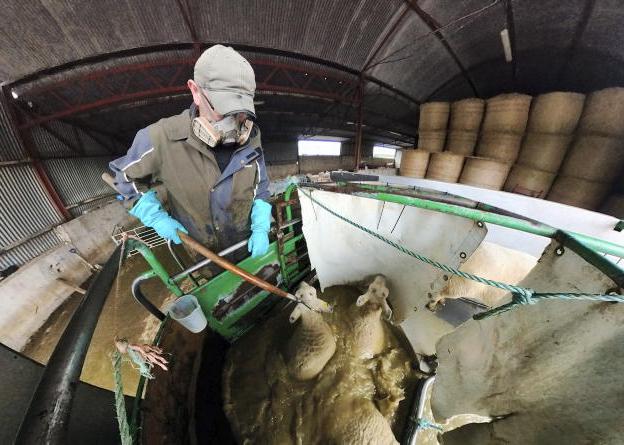
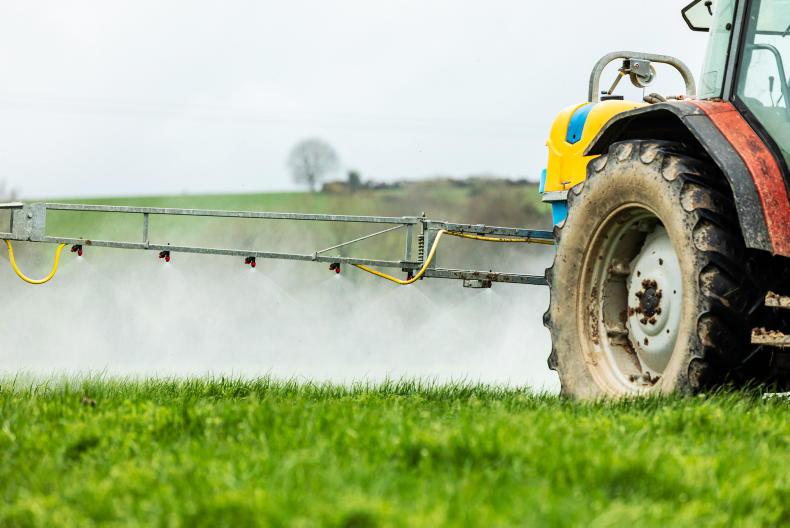
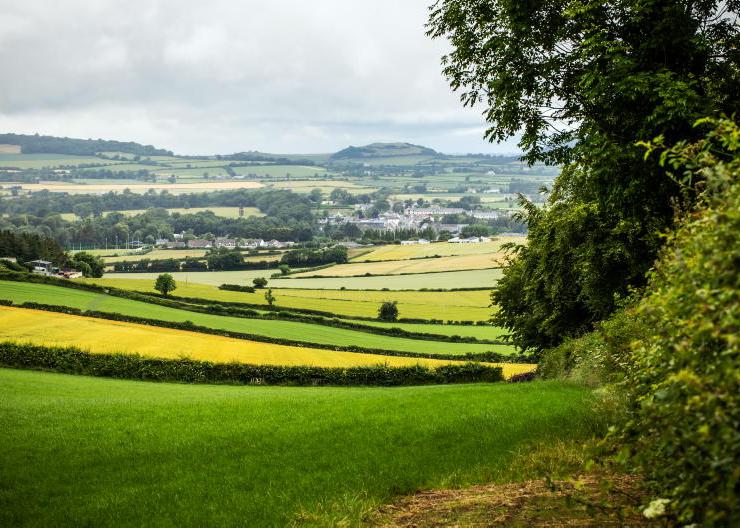
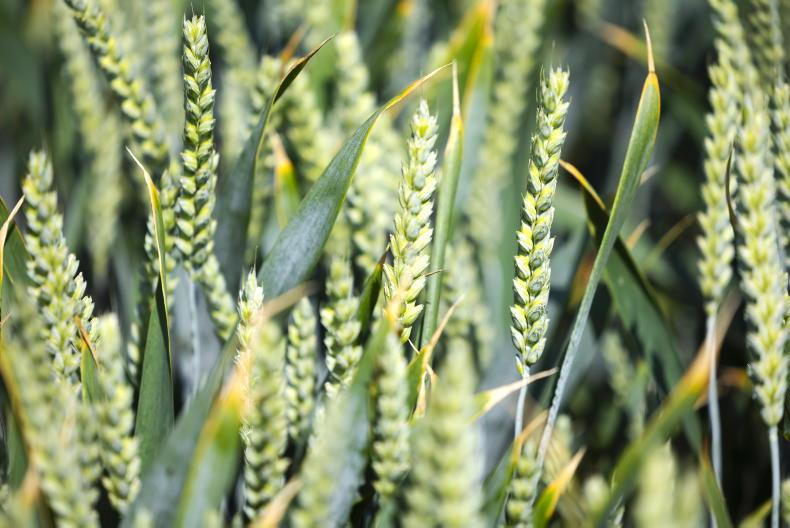
SHARING OPTIONS